Religious faith and practice were integral to the Irish community's sense of cultural identity. Immigrants to the Brandywine found their Catholic faith challenged by the nativism and evangelical revivalism they experienced upon arriving in the United States in the nineteenth century. In 1817, E.I. du Pont organized the Brandywine Manufacturers’ Sunday School (BMSS), a free and non-denominational school for his workers' children.
Although E.I. du Pont insisted the school be non-sectarian, Black Powder, White Lace author Margaret Mulrooney found in her examinations of the correspondence of Victorine du Pont Bauduy, E.I.'s eldest child and the school's director, that the du Pont women often had proselytizing intentions in their leadership of the school. The records Bauduy and her sisters kept regarding the students’ progress provide an important window into the Irish community.
Beyond the BMSS, the E.I. du Pont de Nemours & Co. facilitated their employees establishing churches by allowing deductions to be taken from wage accounts. St. Joseph on the Brandywine church, completed in 1841, eventually became the center of religious life for the Irish Catholic community and continued serving the community well after the mills closed in the 1920s.
PRIMARY SOURCES
Brandywine Manufacturers Sunday School constitution, 1817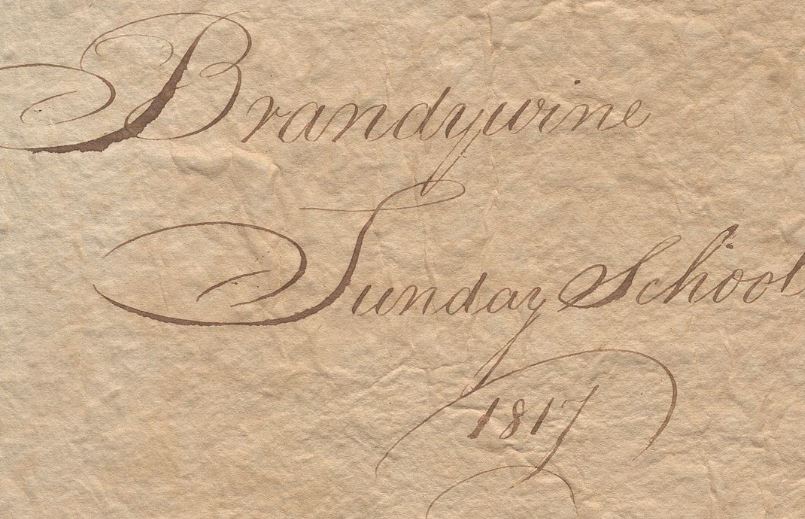
This constitution outlines the formation of the BMSS in 1817 as a non-sectarian school for the children of the local factory workers, with instruction in reading, writing, arithmetic, and religion. E.I. du Pont financially supported the construction of a school building on his property in 1816.
Brandywine Manufacturers’ Sunday School photograph, 1896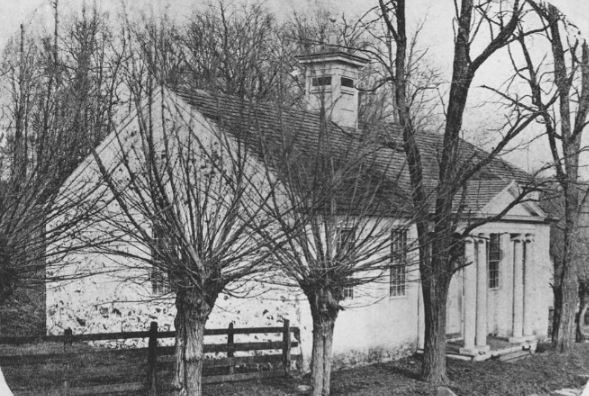
This photograph shows the physical appearance of the BMSS, converted in 1823 from a former office for E.I. du Pont de Nemours & Co. Built of local stone, it contained a single, large classroom and several smaller spaces.
Brandywine Manufacturer’s Sunday School "Rules for Scholars," undated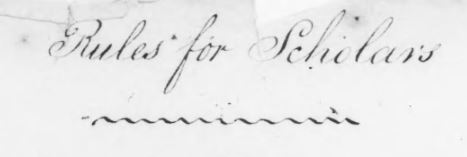
As these rules suggest, Irish children enrolled at the school were expected to learn much more than reading, writing, and arithmetic.
Victorine Elizabeth (du Pont) Bauduy portrait, 1813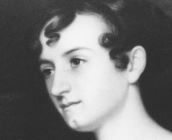
Victorine (du Pont) Bauduy, depicted here by artist Rembrandt Peale, was the eldest child of E.I. du Pont and served as director of the BMSS from 1816 to 1852. Her sisters also served as teachers for the school.
Sophie Madeleine du Pont diaries, 1830s to 1880s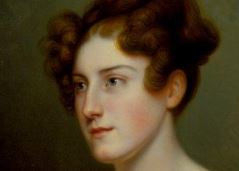
Sophie du Pont, the fifth child of E.I. du Pont, used her extensive diaries and letters to record valuable information concerning everyday life in the powder mill community. These include many accounts of home visits to her BMSS scholars. This entry for February 17, 1832, describes two particularly awkward visits to students' homes. In this entry from March 1841, she described hearing about the Irish workers’ plans to build a Catholic church, writing, “The Catholics put us Protestants to shame completely in their superior zeal and devotedness.”
St Joseph's on the Brandywine Roman Catholic Church photograph, circa 1895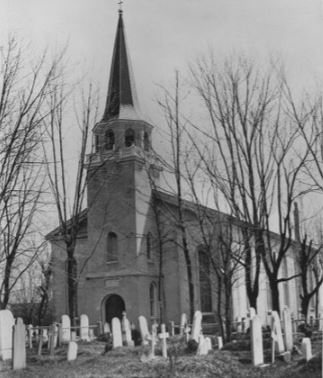
Completed in 1841, St. Joseph’s was named for the patron saint of workers. Although the du Pont family donated money and land, the Irish parishioners raised most of the funds for its construction and helped raise the stone structure. Previously, Catholics along the Brandywine had to walk several miles to attend mass in Wilmington or at a mission church at Coffee Run. The church looks much the same today as in this photograph from 1895. By the time this interior photo was taken circa 1899, the congregation had substantially refined the interior of the nave. A statue of St. Joseph holding the child, Jesus, can be seen in a prominent location to the right of the altar.
St. Joseph Sunday school students photograph, 1887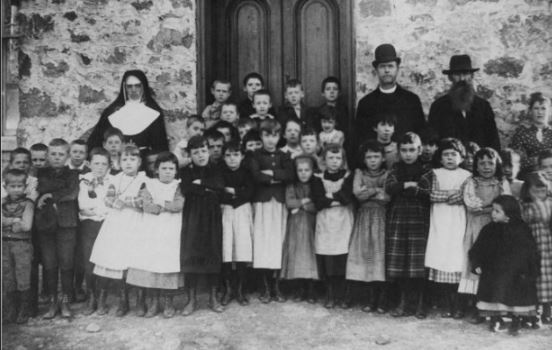
In 1855, Catholic powder mill families had raised enough funds to construct a separate school building at St. Joseph's. Constructed of stone and erected adjacent to the church, it accommodated 126 students. Those who attended public school could still attend Sunday school at St. Joseph's, which began the community's first confirmation classes in 1857. A Sunday school class is seen here in 1887 with one of the sisters from the order of St. Joseph in Pennsylvania and Rev. Edward Henchy, pastor of St. Joseph’s on the Brandywine.
Additional Sources

